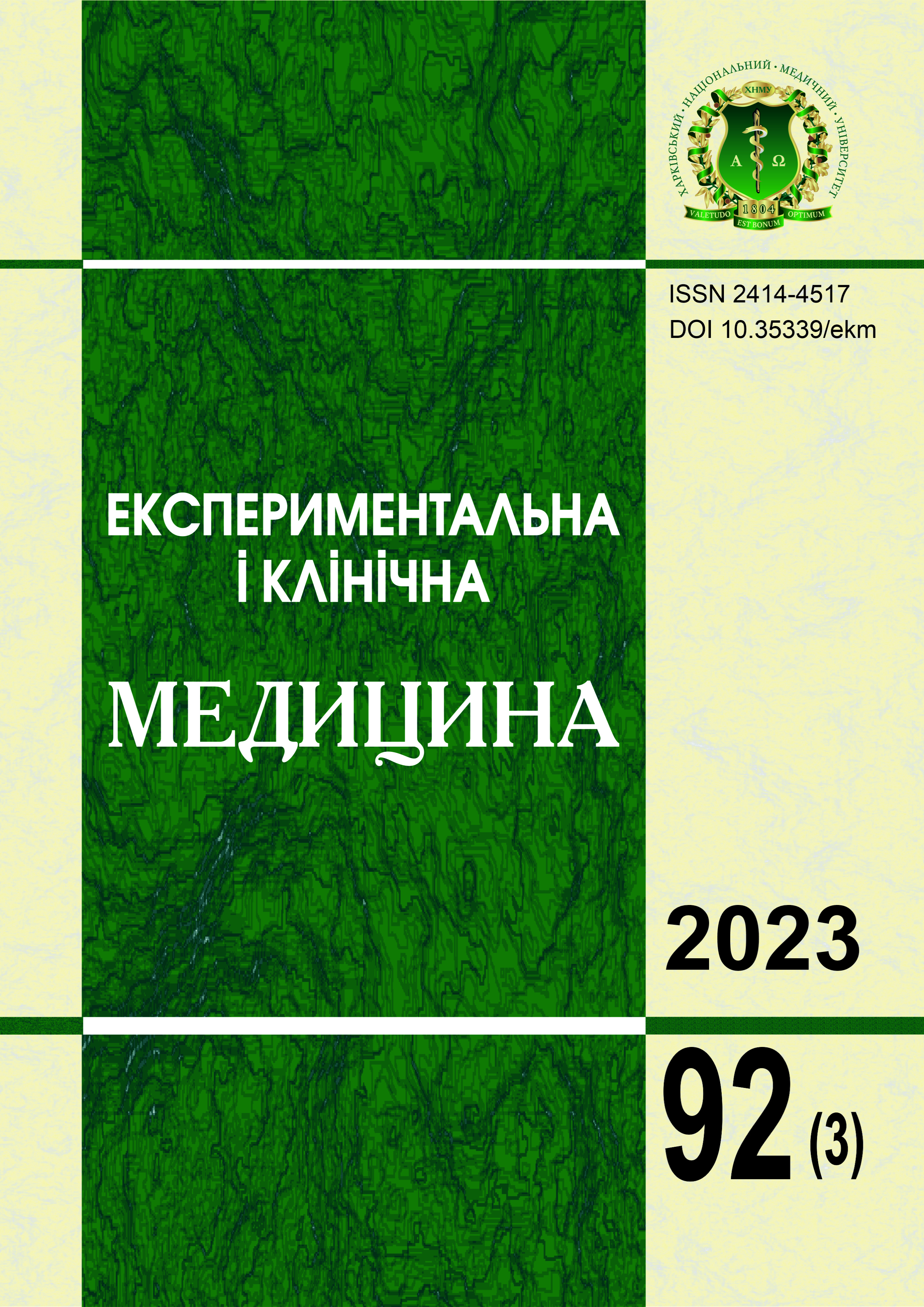Abstract
Retinal detachment occurs primarily as a result of diabetes, high myopia, and eye injuries. Restoration of the anatomical integrity of the detached retina is performed urgently using methods that allow fixing the displaced layers of the retina in their usual place – cryo-, laser-, and electropexy methods. There is no consensus on which of these methods is better. Our study is devoted to electropexy, namely high-frequency electrocoagulation, and describes an experiment on modeling the restoration of the anatomical integrity of a detached retina on lab rabbits of the chinchilla breed using an instrument of original design – a monopolar coagulator with a 25 G tip. 33 rabbits (66 eyes) were divided into four groups: the control group (6 animals) and 3 groups (9 animals each), which were operated using an electric current with a frequency of 66 kHz, a current of 0.1 A, and voltages of 10–12 V (I group), 12–14 V (II group) and 14–16 V (III group) and transvitreal access. All rabbits were subjected to euthanasia: rabbits of the control group (intact) – at the beginning of the experiment, operated rabbits (I–III groups) – 30 days after the operation. Eyes were enucleated, tissues of chorioretinal structures were stained with hematoxylin-eosin and studied under light microscopy with measurement of retinal thickness using the software "ImageFocusAlpha" (Netherlands) version 1.3.7. The results of morphological and morphometric studies were compared with the results of our other experiment conducted earlier with similar conditions of impact on chorioretinal structures, but with suprachoroidal access. The research and comparison showed that both with suprachoroidal and transvitreal accesses, with a current frequency of 66 kHz and a current strength of 0.1 A, the optimal exposure voltage is 10–12 V, and the best approach is the suprachoroidal access.
Keywords: vitreoretinal surgery, retinal detachment, retinal thickness.
References
GBD 2019 Blindness and Vision Impairment Collaborators; Vision Loss Expert Group of the Global Burden of Disease Study. Causes of blindness and vision impairment in 2020 and trends over 30 years, and prevalence of avoidable blindness in relation to VISION 2020: the Right to Sight: an analysis for the Global Burden of Disease Study. Lancet Glob Health. 2021;9(2):e144-60. DOI: 10.1016/S2214-109X(20)30489-7. PMID: 33275949.
Burton MJ, Ramke J, Marques AP, Bourne RRA, Congdon N, Jones I, et al. The Lancet Global Health Commission on Global Eye Health: vision beyond 2020. Lancet Glob Health. 2021;9(4):e489-551. DOI: 10.1016/S2214-109X(20)30488-5. PMID: 33607016.
The Lancet Global Health. Unlocking human potential with universal eye health. Lancet Glob Health. 2021;9(4):e372. DOI: 10.1016/S2214-109X(21)00138-8. PMID: 33740398.
Lin KY, Hsih WH, Lin YB, Wen CY, Chang TJ. Update in the epidemiology, risk factors, screening, and treatment of diabetic retinopathy. J Diabetes Investig. 2021;12(8):1322-1325. DOI: 10.1111/jdi.13480. PMID: 33316144.
Hoogewoud F, Chronopoulos A, Varga Z, Souteyrand G, Thumann G, Schutz JS. Traumatic retinal detachment – the difficulty and importance of correct diagnosis. Surv Ophthalmol. 2016;61(2):156-63. DOI: 10.1016/j.survophthal.2015.07.003. PMID: 26216341.
Dulz S, Dimopoulos V, Katz T, Kromer R, Bigdon E, Spitzer MS, Skevas C. Reliability of the ocular trauma score for the predictability of traumatic and post-traumatic retinal detachment after open globe injury. Int J Ophthalmol. 2021;14(10):1589-94. DOI: 10.18240/ijo.2021.10.17. PMID: 34667737.
Nemet A, Moshiri A, Yiu G, Loewenstein A, Moisseiev E. A review of innovations in rhegmatogenous retinal detachment surgical techniques. J Ophthalmol. 2017;2017:4310643. DOI: 10.1155/2017/4310643. PMID: 28584664.
Sena DF, Kilian R, Liu S-H, Rizzo S, Virgili G. Pneumatic retinopexy versus scleral buckle for repairing simple rhegmatogenous retinal detachments. Cochrane Database of Systematic Reviews. 2021;(11):Art.No.CD008350. DOI: 10.1002/14651858.CD008350.pub3.
Antaki F, Dirani A, Ciongoli MR, Steel DHW, Rezende F. Hemorrhagic complications associated with suprachoroidal buckling. Int J Retina Vitreous. 2020;6:10. DOI: 10.1186/s40942-020-00211-6. PMID: 32318273.
Znaor L, Medic A, Binder S, Vucinovic A, Marin Lovric J, Puljak L. Pars plana vitrectomy versus scleral buckling for repairing simple rhegmatogenous retinal detachments. Cochrane Database Syst Rev. 2019;3(3):CD009562. DOI: 10.1002/14651858.CD009562.pub2. PMID: 30848830.
Bentivoglio M, Valmaggia C, Scholl HPN, Guber J. Comparative study of endolaser versus cryocoagulation in vitrectomy for rhegmatogenous retinal detachment. BMC Ophthalmol. 2019;19(1):96. DOI: 10.1186/s12886-019-1099-9. PMID: 31023285.
Cranwell WC, Sinclair R. Optimising cryosurgery technique. Aust Fam Physician. 2017;46(5):270-4. PMID: 28472571.
Dimopoulos S, William A, Voykov B, Bartz-Schmidt KU, Ziemssen F, Leitritz MA. Results of different strategies to manage complicated retinal re-detachment. Graefes Arch Clin Exp Ophthalmol. 2021;259(2):335-41. DOI: 10.1007/s00417-020-04923-1. PMID: 32926193.
Saoud O, Turchyn MV, Serhiienko AM, Korol AP, Umanets MM. Retina changes in the early stages after high-frequency monopolar electrocoagulation through the suprachoroidal access. Experimental and Clinical Medicine. 2021;90(3):30-43. DOI: ekm.2021.90.1.sts [in Ukrainian].
Saoud O, Serhiienko AM, Turchyn MV, Umanets MM, Korol AP. Retina damage and repair after high-frequency monopolar electrocoagulation by suprachorioid access. Medicine Today and Tomorrow. 2021;90(4):24-39. DOI: 10.35339/msz.2021.90.4.sst [in Ukrainian].

This work is licensed under a Creative Commons Attribution-NonCommercial-ShareAlike 4.0 International License.

